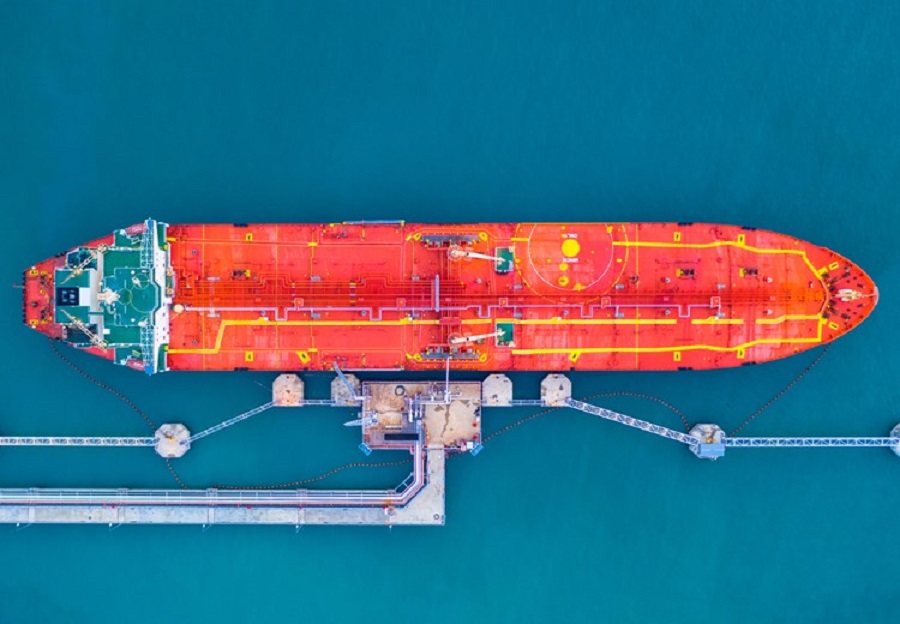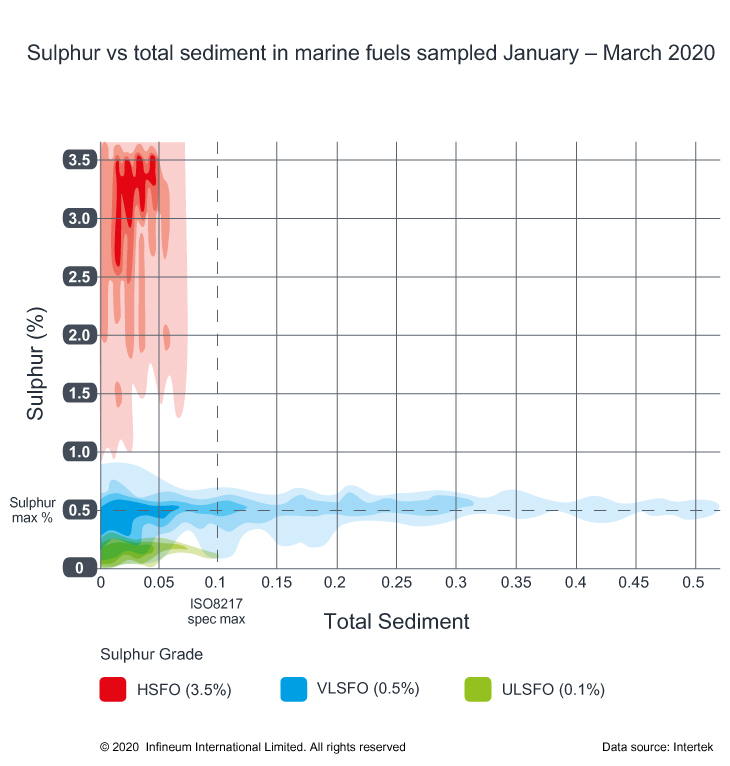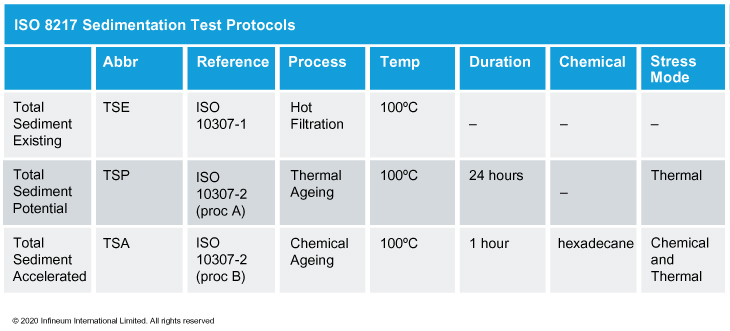
Post IMO 2020: Combatting the stability issues arising with very low sulphur fuel oils
Since January, the new IMO 2020 regulations on fuel sulphur have applied to international shipping. As the marine and refining industries adapt to these regulations, ongoing concerns relating to the changes to the new very low sulphur fuel oils (VLSFO), which are quite different in nature from their high sulphur fuel oil (HSFO) counterparts, not least their high levels of sedimentation.
Infineum has developed market-leading range of additives packages to provide onboard operating benefits in two critical areas – fuel stability and compatibility – and enable customers to effectively meet the ongoing challenges of IMO 2020 and improve refining economics. The range is available now from Multisol.
For Infineum Insight, Steve Benwell, Global Fuels Key Accounts Manager, and Rob Ashton, Marine Fuel Additive Business Development Manager, recently talked about the unprecedented change that this regulation, combined with the COVID-19 pandemic, has had on the marine fuels and shipping industries and reveals some of the fuel quality concerns that are emerging.
Thinking back to the end of 2019, when refiners, bunkerers and shippers were busy preparing for the implementation of the IMO 2020 sulphur regulations, who could have predicted the set of circumstances that have bought us to where we are now? In the last few months, unprecedented events have had a significant and far reaching impact across these industries:
- The global COVID-19 pandemic has required severe restrictions on movement and interpersonal contact, which has brought economic activity to a virtual standstill in some industries and countries.
- A corresponding massive reduction in air traffic and significant reduction in use of personal transportation has led to a major oversupply of jet fuel and gasoline.
- A price war on crude oil, just when demand was starting to fall linked to the slowdown in economic activity, resulted in some crude oil prices actually turning negative for the first time ever.
- The knock-on effect of an oversupply of low value crude oil and certain finished fuel products on storage capacity saw large amounts of floating storage employed to supplement land-based tankage, a boom for the tanker ship owners.
And, in the middle of all this, the marine and fuel supply industries have been trying to grapple with IMO 2020, probably the largest regulatory change in fuel quality they have ever seen.
Despite this apparent chaos, crude continues to be refined, fuels continue to be blended and delivered and ships continue to sail, even if not quite so many of them. Currently it appears there is little concern about the availability of fuel to meet demand. The carriage ban that came into effect on March 1 2020 seems to have passed without incident although, quite rightly, regulatory officials are likely more focused on safe operations in light of the threat from COVID-19.
There have been relatively few reports of ships encountering significant problems when using the new low sulphur fuels, consequently, the fuel quality control and safe handling protocols being employed appear to be working reasonably well.
One of the results of the fall in crude prices and the general finished fuel oversupply is that the high to low sulphur residual fuel price spread has compressed from above $300/MT to an all-time low of ~$50/MT at the end of April. This puts it at less than 20% of what it was at its peak which, combined with several other factors, has led to a slowdown in the installation of scrubbers.
However, despite the relative paucity of publicly disclosed product quality issues linked to compromised ship operation, it is clear that the new very low sulphur fuel oils (VLSFO) are quite different in nature from their high sulphur fuel oil (HSFO) counterparts and this has manifested itself in several key areas. This is the first of several Insight articles that will deal with product quality issues that are being encountered as these new fuels make it into the market.
Product stability, compatibility and sedimentation performance
There have been multiple reports, from all major bunkering regions, about high levels of sedimentation in some VLSFOs with some indicating that such problems might be experienced with up to 10% of VLSFOs. While perhaps not to this same level, analysis has shown that sedimentation issues are much more prevalent with VLSFOs than with HSFOs.

To maximise blend economics, there is a desire to blend VLSFOs as close to the sulphur specification as possible. This trend is reflected in these results and, at this early stage, a number of fuels have been found to be above 0.5% sulphur but only by a small amount.

However, depending on a fuel’s composition, this may mean that sedimentation performance is also a limiting factor. The slowdown in demand for fuel may have come at a fortuitous time, giving the fuel producers time to figure out why this might be the case and how to fix it.
Asphaltene sedimentation in HSFOs is seldom a problem, despite much higher levels of asphaltene materials in these fuels. This is because the predominantly aromatic nature of the fuels means that asphaltenes are strongly bound in solution or colloidal suspension and hence the sedimentation tests typically return very low levels. As a result, HSFOs are generally blended to maximise viscosity and as long as reasonable quality components are used all other parameters will typically fall well within specification.
In addition, when looking at the sedimentation test protocols referenced in ISO 8217, Total Sediment Accelerated (TSA) values for these HSFOs would generally be similar to or higher than Total Sediment Potential (TSP) values. This indicates that, under the normal thermal stresses these fuels experience in the distribution system (typically stored in tankage at 45-60oC), the asphaltenes would remain fully solubilised. It would also be unusual for heavy fuel oil stability to deteriorate while in storage with a TSP level <0.1%1.

However, experience on many of the new VLSFOs, despite their lower asphaltene content, shows a different trend. To reduce sulphur content, these blends are typically much more paraffinic and, as a result, any asphaltenes present in residual components used are not as strongly bound in solution. In such fuels, the lower inherent asphaltene content coupled with the relatively high paraffin content typically yields a low TSA value as the chemical ageing process is insufficient to destabilise the asphaltenes present. However, the thermal stresses associated with the TSP test, and that can be experienced by the fuel when held in heated storage, expose the poorer solubility balance leading to higher TSP values, which can lead the sedimentation performance to deteriorate over time. Infineum has developed an extended TSP test protocol to mimic these extended thermal stress conditions.
This protocol was used in a recently published case study where a customer had been experiencing excessive build up of TSP over time in their VLSFO production.
Click here to read the case study.
Analysis of the fuel blends in question revealed that the VLSFOs remained stable under normal storage temperature conditions. But, when further thermally stressed at higher temperatures over the same time period, the asphaltenes became destabilised and elevated TSP values were recorded.

Infineum has developed a marine fuels additive package – available now from Multisol – to provide onboard operating benefits in two critical areas: fuel stability and compatibility. Application of this additive package to the asphaltene containing component during fuel blending revealed that it was able to suppress the effect of severe thermal stressing, which was further confirmed by a successful field trial.

The Infineum additive package – available now from Multisol – can also operate effectively when used as an aftertreatment additive to VLSFOs that have degraded over time. This was confirmed in a recent customer program where a customer observed that two VLSFOs, which had been held in storage at 55°C for a two week period had become unstable. The VLSFOs were subsequently brought back on-specification after additive treatment.

Experience has shown that the new additive package – available now from Multisol – demonstrates exceptional stability and compatibility performance over a very wide range of fuels. However, there are instances where additive treatment is unable to bring the VLSFOs back on-specification. In these cases, the additive can still play a role in optimised blend away programs and in extending the stability of the subsequent blend. This capability was demonstrated in a customer study where the additive was able to offer some improvement in TSP but was unable to bring the fuel back on-specification. The customer selected a suitable blend away program and the additive was able to effectively treat this new blend.

The customer was naturally concerned that this new blend would also drift off-specification over time. To address this concern further testing was performed with extended thermal ageing, which demonstrated that the additive provided added protection against further thermal stress.

During these troubled times we have seen severe compression of the value of component streams, which to a certain extent has eased the life of the marine fuel blender and has certainly reduced the additional fuel cost burden of the new IMO 2020 regulations on the shipping industry.
Experience with and analysis of these new VLSFOs is highlighting quite different sedimentation characteristics from the HSFOs of the past.
Looking ahead, as the economy picks up again prudent use of Infineum’s asphaltene dispersant solutions can provide flexibility not only during blending but also after blending when fuels have encountered stability issues. There is also the added assurance that these additives can continue to provide benefits long after the fuel has been blended.
To download this article in full, visit the downloads section of the Multisol website.
Customers and refiners looking for ways to meet stringent environmental legislation while maximising production without increasing costs know that they can rely upon Multisol and its range of products to provide the services and technical expertise necessary to achieve their goals.
For more information on Multisol’s market-leading range of Infineum products, including its marine fuels additive package, visit the products section of this website or contact us to find out more.